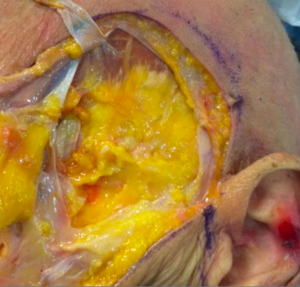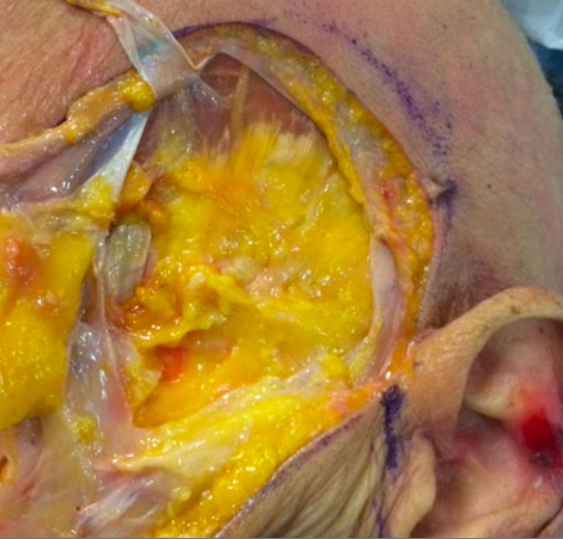
In the December 2021 issue of the Aesthetic Surgery Journal an article on published on this area of facial augmentation entitled ‘A New Target for Temple Volumization? An Anatomical and Ultrasound-Guided Study of the Intermediate Temporal Fat Pad’. In this paper the author performed an anatomical evaluation of an intermediate level of temporal augmentation. Specifically the anatomy of the intermediate temporal fat pad was examined by both ultrasound and dye injections in twenty fresh cadavers. Cross-sectional dissection was done to evaluate injection accuracy. A single clinical case was done with ultrasound-guided injected saline.

While the intermediate temporal fat pad region can be accurately injected for aesthetic voluminization purposes, it is not clear whether doing so has any advantages over blind injection techniques. The most important location is to be certain the injectate sits above the deep temporal fascia where it can exert its greatest effects. The softness of filler materials does not provide a great push on the tight deep temporal fascia if placed below it. Implants do much better in the subfascial location where their increased stiffness and volume (even a thin temporal implant creates over 3ccs of a volume effect) provides a greater and permanent aesthetic effect.
Dr. Barry Eppley
Indianapolis, Indiana



